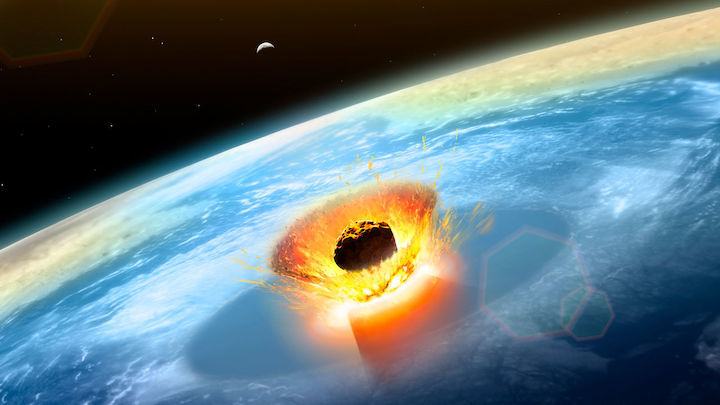13.07.2021

When a giant space rock struck the waters near Mexico’s Yucatán Peninsula 66 million years ago, it sent up a blanket of dust that blotted out the Sun for years, sending temperatures plummeting and killing off the dinosaurs. The impact also generated a tsunami in the Gulf of Mexico that some modelers believe sent an initial tidal wave up to 1500 meters (or nearly 1 mile) high crashing into North America, one that was followed by smaller pulses. Now, for the first time, scientists have discovered fossilized megaripples from this tsunami buried in sediments in what is now central Louisiana.
“It’s great to actually have evidence of something that has been theorized for a really long time,” says Sean Gulick, a geophysicist at the University of Texas, Austin. Gulick was not involved in the work, but he co-led a campaign in 2016 to drill down to the remains of the impact crater, called Chicxulub.
To look for ancient buried structures, researchers rely on seismic imaging techniques to “see” underground. They set off explosives or use industrial hammers to send seismic waves into the earth, and listen for reflections from the layers of sediment and rock below. Companies use the technique to search for oil and gas, and they have mountains of data—especially in areas such as the Gulf of Mexico.
More than 10 years ago, Gary Kinsland, a geophysicist at the University of Louisiana, Lafayette, obtained seismic imaging data for central Louisiana from Devon Energy. At the time of the dino-killing impact, sea levels were higher, and Kinsland thought information from this region would hold clues to what happened in the shallow seas off the coastline.
When Kinsland and his colleagues analyzed a layer about 1500 meters underground—one associated with the time of the impact—they saw fossilized ripples. These “megaripples” were spaced up to 1 kilometer apart and were an average of 16 meters tall, they reported in an Earth & Planetary Science Letters study posted online on 2 July.

Seismic images of underground layers in Louisiana revealed megaripples associated with a tsunami.
Kinsland believes the ripples are the imprint of the tsunami waves as they approached the shore in waters about 60 meters deep, disturbing the seafloor sediments. (Tidal waves gain their massive height only when they reach the ramp of the coastline.)
Kinsland says the orientation of the ripples was also consistent with the impact. When he drew a line perpendicular to their crests, he says, it went right to Chicxulub. He adds that the location was perfect for preserving the ripples, which would have eventually been buried in sediment. “The water was so deep that once the tsunami had quit, regular storm waves couldn’t disturb what was down there.”
The discovery is the latest in a flurry of research about the Chicxulub impact, which was first hypothesized in the 1980s. Cores from the 2016 drilling expedition helped explain how the impact crater was formed and charted the disappearance and recovery of Earth’s life. In 2019, researchers reported the discovery of a fossil site in North Dakota, 3000 kilometers north of Chicxulub, that they say records the hours after the impact and includes debris swept inland from the tsunami.
“We have small pieces of the puzzle that keep getting added in,” says Alfio Alessandro Chiarenza, a paleontologist at the University of Vigo who was not involved with the new study. “Now this research is another one, giving more evidence of a cataclysmic tsunami that probably inundated [everything] for thousands of miles.”
Quelle: AAAS
